Port Isaac
in
Cornwall
Amy and I spent a wonderful week in Port Isaac, a small fishing/tourist village along the northern coast of Cornwall, which is located in the southwestern portion of the UK.
For quite a reasonable price, we rented a very nice 3-bedroom cottage for a week . . .
|
|
|
|
with a fully equipped kitchen . . .
|
|
|
and a very comfortable living room . . .
* * * * *
Port Isaac is a very picturesque village
The main road into Port Isaac . . .
|
|
|
The main road passes through the harbor area in the center of the village . . .
|
|
|
And continues out the other side of the village . . .
Most of the rest of the streets are either small walking lanes or footpaths . . .
|
|
|
|
|
|
There is some interesting architecture, including some very interesting chimneys . . .
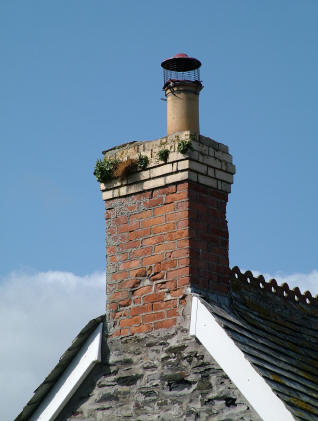
|
|
|
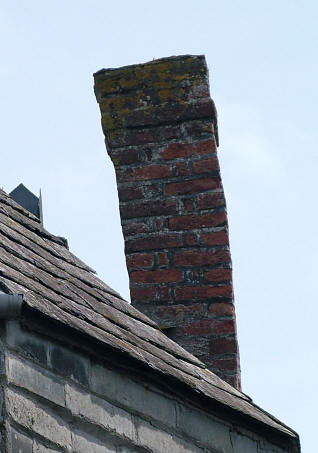
which are the preferred perch of seagulls . . .
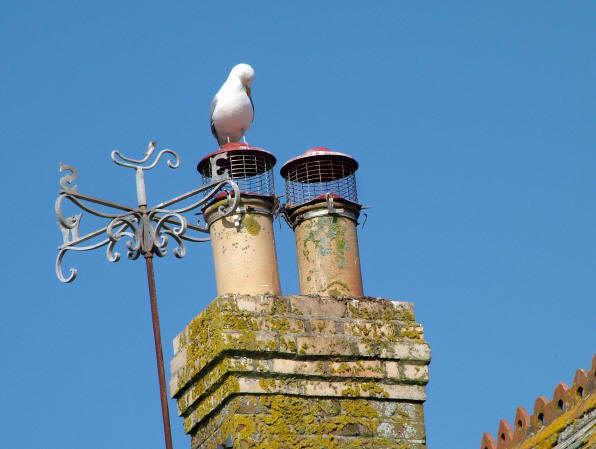
|
|
|
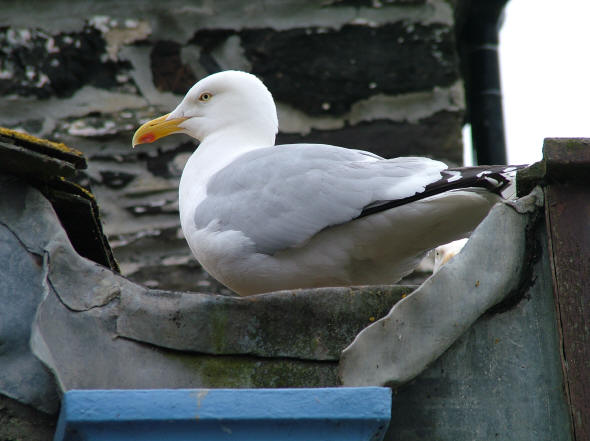
* * * * *
Port Isaac also has a very pleasant harbor . . .
|
|
|
which experiences a dramatic change from high to low tide . . .
Tide in . . .
Tide out . . .
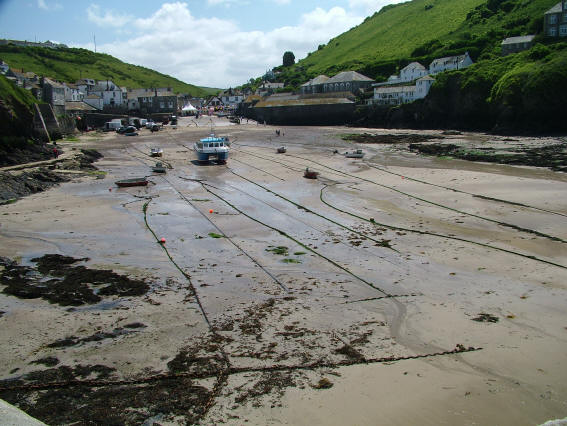
There are a few small caves in the harbor that one can explore . . .
|
|
|
However, you need to explore them during the low tide, as they are not readily accessible during once the tide comes in . . .
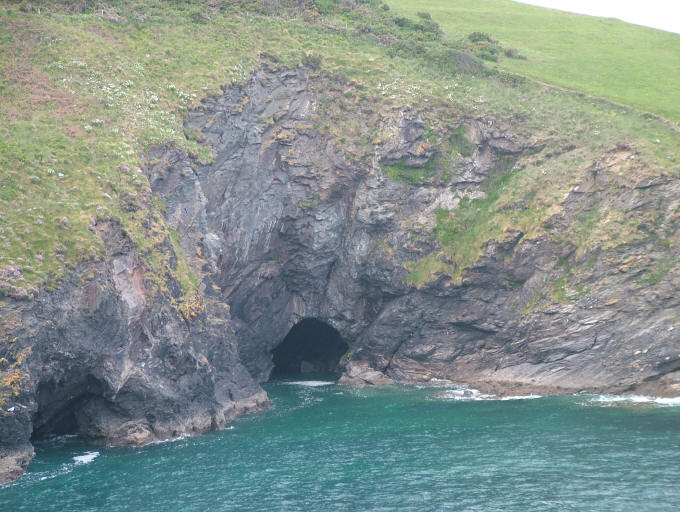
* * * * *
The South West Coast Path National Trail runs for 630 miles along the coast of Cornwall. The trail passes through all of the small villages along the coast, including Port Isaac. It is a great trail to hike along, with constant views of the ocean. It is particularly nice on slightly windy days. Amy and I hiked along the trail north and south of Port Isaac. In some of the photos, you can see Port Isaac in the background.
The trail follows a mostly steady grade . . .
|
|
|
with occasional ups and downs . . .
|
|
|
And the views are spectacular . . .
|
|
|
Since the trail passes through the various towns along the coast, you are never very far from a pub!!
Golden Lion Pub
in
Port Isaac
And, of course you should never go hiking without a good trail guide . . .

* * * * *
Port Isaac serves as the setting for "Portwenn", the fictional village in the very popular British television series Doc Martin. Many of the buildings in Port Isaac serve as filming locations in Portwenn.
|
The Port Isaac Fish Sellers becomes The Portwenn Fish Sellers
|
The local candy store becomes Mrs. Tishall's Pharmacy
|
|
The Old School Hotel and Restaurant becomes the location for the Portwenn Elementary School.
|
One of the local cottages becomes Louisa Glasson's apartment.
|
|
The rear balcony of the Golden Lion Pub serves as the location of the balcony in the pub in Portwenn where Louisa and Doc Martin seem never to be able to have a drink together.
|
One of the private residences in Port Isaac serves as the location for Large's Restaurant
|
And the smaller of the two houses in the photo below serves as the exterior location for Doc Martin's Surgery (office).
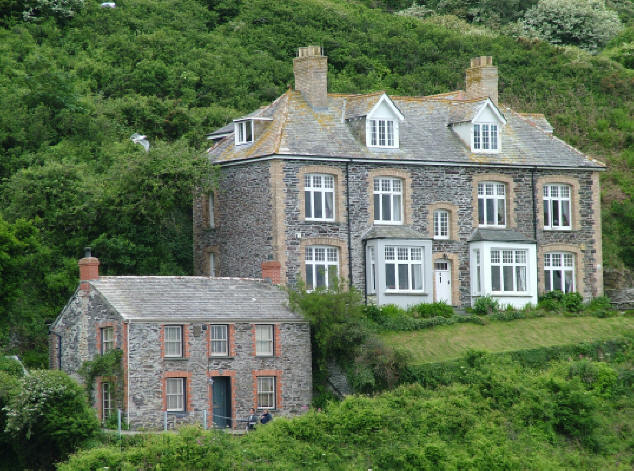
As it turned out, the film crew was in Port Isaac filming scenes for the new season of Doc Martin while we were there.
|
|
|
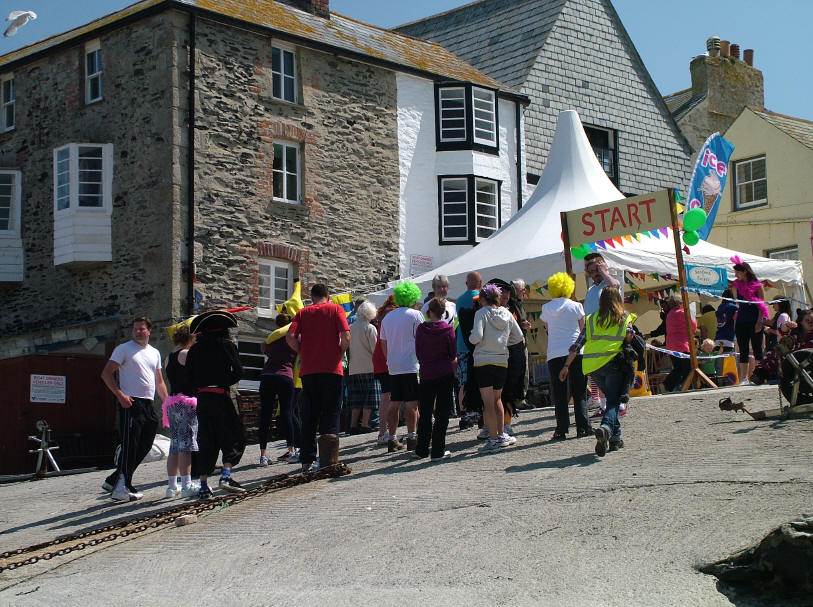
And several of the major actors in the series were on location, including . . .
|
Bert Large (Ian McNeice)
|
Louisa Glasson (Caroline Catz)
|
and
Doc Martin
(Martin Clunes)
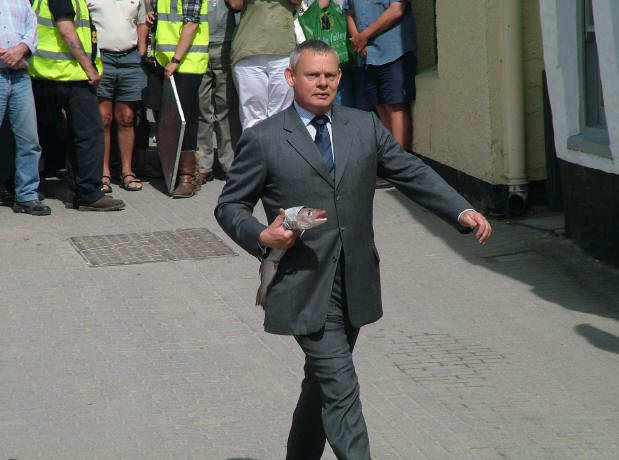
* * * * *
Port Isaac is also ideally situated to explore other sites within Cornwall.
Given that Cornwall is in the UK, it is never difficult to find a great pub!
Two of our favorites were .
. .
The Blisland Inn
(in Blisland)
|
|
|
and
Warreners Pub
(in Dartmoor)
|
|
|
I found the "Warning" for Warreners Pie (the specialty of the house) especially interesting . . .
We also visited . . .
Hameldown Tor
(Considered by some to be the inspiration for Arthur Conan Doyle's Hound of the Baskervilles.)
There was a food stand in the nearby parking lot . . .
|
|
Complete with a sense of humor . . .
|
A pleasant 5-minute walk behind Hameldown Tor . . .
. . . takes you to the Bronze-Age Village of Grimspound . . .
|
|
|
One of the more striking churches in Cornwall is St. Enodoc's Church overlooking Daymer Bay near the village of Trebetherick, about 15 miles south of Port Isaac. The earliest structures in the church date to the 12th century. Additions were made to the church between the 13th and 15th centuries, However, the church subsequently became substantially buried in sand (it was constructed on a sand dune). According to one of the local tourist websites, the church was virtually buried in sand from the 16th century to the middle of the 19th century, and was known locally as "Sinking Neddy" or "Sinkininny Church." The sand was removed and the church cleaned and restored to its present condition during the 1860s.
|
|
|
|
|
|
* * * * *